
Badsell in the parish of Tudeley in Kent, is an historic estate, near today's village of Paddock Wood.

Badsell in the parish of Tudeley in Kent, is an historic estate, near today's village of Paddock Wood.
Hasted (1798) wrote as follows: [1]
The estate includes a Grade II listed house and a leylandii hedge maze. [2]

John Fane, 10th Earl of Westmorland,, styled Lord Burghersh between 1771 and 1774, was a British Tory politician of the late 18th and early 19th centuries, who served in most of the cabinets of the period, primarily as Lord Privy Seal ultimately spending 33 years in office.

Sir Thomas Cheney KG of the Blackfriars, City of London and Shurland, Isle of Sheppey, Kent, was an English administrator and diplomat, Lord Warden of the Cinque Ports in south-east England from 1536 until his death.

All Saints Church in Tudeley, Kent, England, is the only church in the world that has all its windows in stained glass designed by Marc Chagall.
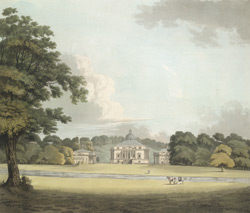
Mereworth Castle is a grade I listed Palladian country house in Mereworth, Kent, England.

John Fane, 7th Earl of Westmorland, styled The Honourable John Fane from 1691 to 1733 and Lord Catherlough from 1733 to 1736, of Mereworth Castle in Kent, was a British Army officer and politician who sat in the House of Commons in three separate stretches between 1708 and 1734.
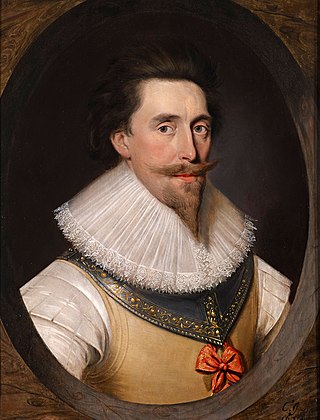
Francis Fane, 1st Earl of Westmorland, of Mereworth in Kent and of Apethorpe in Northamptonshire was an English landowner and politician who sat in the House of Commons between 1601 and 1624 and then was raised to the Peerage as Earl of Westmorland.

Tunstall is a linear village and civil parish in Swale in Kent, England. It is about 2 km to the southwest of the centre of Sittingbourne, on a road towards Bredgar.

Tonge is a village near Sittingbourne in Kent, England. The hamlet is north of Bapchild, close to Murston Marshes beside the Swale.
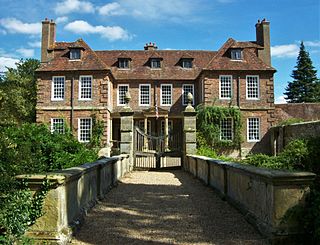
Groombridge Place is a moated manor house in the village of Groombridge near Tunbridge Wells, Kent, England. It has become a tourist attraction, noted for its formal gardens and vineyards. The manor house has an associated dower house.
Sir Thomas Browne was a Member of Parliament and Chancellor of the Exchequer. Browne's tenure as Chancellor occurred during the Great Bullion Famine and the Great Slump in England. He was executed for treason on 20 July 1460.
Sir Ralph Vane was a supporter of Edward Seymour, 1st Duke of Somerset. He was hanged on Tower Hill as a result of factional strife.
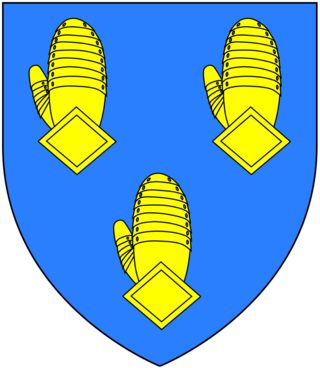
Thomas Fane of Badsell Manor in the parish of Tudeley in Kent, and of Mereworth Castle, Kent, was Sheriff of Kent. He is not to be confused with his younger brother, Thomas Fane, of Burston, Hunton, Kent, a Member of Parliament for Dover.

Tapeley is a historic estate in the parish of Westleigh in North Devon, England.
William Haute (1390–1462) of Bishopsbourne, Kent, was an English politician.
Sir Philip St Clere was a son of Sir Philip St Clere of Ightham, Kent and Little Preston, Northamptonshire & his wife Joan de Audley. He served as High Sheriff of Surrey and Sussex and was a major landowner whose estates included land in eight English counties.

Richard Wydeville was an English landowner, soldier, diplomat, administrator and politician. His son married an aunt of King Henry VI and they were the parents of the wife of the next king, Edward IV.

Ralph St Leger of Ulcombe in Kent was Sheriff of Kent in 1467/8 and was constable of Leeds Castle in Kent. He was a member of the St Leger family.
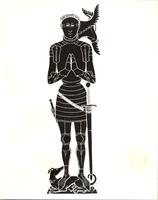
Sir John St Leger of Ulcombe in Kent, was Sheriff of Kent in 1430 and 1433.
Richard Lestrange of Hunstanton and King's Lynn, Norfolk; later of Kilkenny, Ireland, was an English politician.
The Hendley family were English landowners in the county of Kent from before 1344 until the last male member of the main branch died childless and insane in 1798. They originally held the manor of Coursehorn in the parish of Cranbrook and later acquired the estate of Gore Court in the parish of Otham. Members of the family, which included knights and a baronet, served as a Member of Parliament and as High Sheriff of Kent.